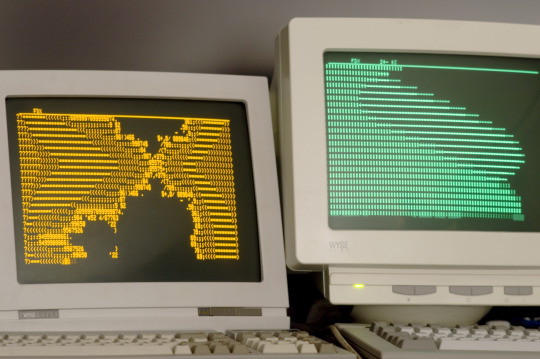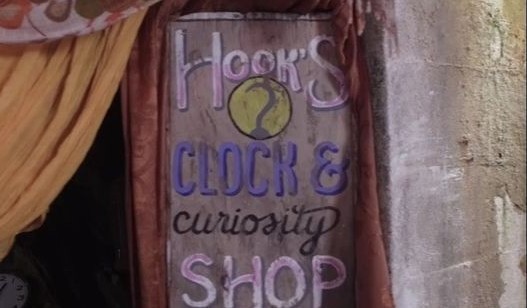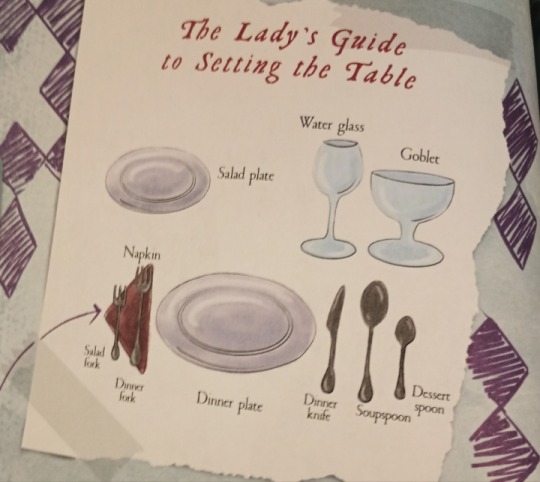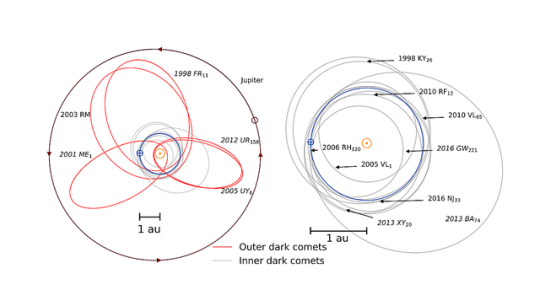#Apple networking chip
Explore tagged Tumblr posts
Text








🌟 Apple's Next Gen Revolution: What’s Coming in 2025! 🌟 Get ready for Apple TV 2025, the HomePod Mini 2025, and exciting updates in iOS Next Gen! With a new Apple networking chip, Apple is pushing the boundaries of smart home integration and device connectivity. Learn more about iOS 18 rollout delays, the next iOS update plans, and Mark Gurman’s predictions for Apple's future. Stay ahead with the latest on NextGen iPhone features and Apple's evolving ecosystem. 🚀
#iOS Next Gen#NextGen iPhone#Apple TV 2025#HomePod Mini 2025#Apple networking chip#iOS 18 rollout delays#iOS 19 plans#Mark Gurman Apple predictions#Apple ecosystem updates#Smart home Apple devices#Future of Apple HomeKit#Apple’s chip innovation#ios next update release date#next ios update date#iphone update#apple update#apple ios#ios update#new ios update#new ios#next iphone update#next ios update#latest ios#next apple update#next ios#iphone beta 2#ios public beta#next ios update release date#ios beta3#ios update next
1 note
·
View note
Text
For contact 9551913312/9941534156(Call or Whatsapp)apple service centre near me hyderabad,Kondapur,ameerpet,kukatpally,uppal, apple customer care india toll free, Apple Laptop Service center in hyderabad, Contact-9885729292,
#Apple Authorised Service Center in Hyderabad#Apple Service Centre in Hyderabad#Apple Service Center in Hyderabad#apple iPad touch service#apple iPad screen ervice#Apple Repair Center in Hyderabad#Apple Macbook Service Center in Hyderabad#Apple Laptop Service Center in Hyderabad#iPhone disabled in hyderabad#ios update and down grading in ameerpet#network issues on iphones and android phones in kukatpally#iPhone genuine spare parts in hyderabad#display replacement for all types of mobile phones hyderabad#chip level working on mobile motherboards in kukatpally
0 notes
Text
On Multitasking
Sharing a Computer with Friends

The Motorola 68030 was a decently powerful microprocessor for its day. It is a fully 32-bit processor with 16 general-purpose registers, separate instruction & data caches, memory management unit, 18 addressing modes, over 100 instructions, pipelined architecture, and was available rated up to 50MHz. It was used in computers by Apple, Amiga, NeXT, Sun, Atari, and saw further life embedded in devices such as printers, oscilloscopes, and network switches. It was the kind of microprocessor used for desktop publishing, 3D CAD & animation, photo & video editing, etc.
In short, the 68030 is a microprocessor that can do some serious work. That's part of why I like it so much. It's a real workhorse chip but as far as 32-bit microprocessors go, it's dead simple to build with.
But running a single quick & simple BASIC program hardly seems like an adequate exercise for such a capable chip.
There is a prevailing claim that the 68000 architecture was heavily inspired by that of the PDP-11 or VAX minicomputers — powerhouses of the previous generation of computing. These machines ran entire businesses, at times servicing many simultaneous users. Surely the 68030 with similar capabilities but significantly faster instruction throughput than the decade-older machines would be more than capable of handling such a workload.
As I've mentioned before, one of my end goals for my 68030 projects is to run a proper operating system. Something like System V, BSD, or Linux; a true multi-user system befitting of the 68k's architectural heritage. My programming skills are limited, and getting such a complex project running is still outside my reach. But I am learning, and slowly inching myself closer to that goal.
Recently I built an expansion card for my Wrap030 project to add another four serial ports to it. In the context of the old minicomputers, another serial port means another terminal, which means the ability to serve one more user. My new 4-port serial card should give me the ability to add four new user terminals.
If only I had software capable of doing so.
Excluding symmetric multiprocessing and today's multi-core behemoths, supporting multiple user processes on a single computer processor means dividing time between them. The computer will run one user's program for a little while, then stop and run another user's program for a little while. Do this fast enough and neither user might ever notice that the computer is paying attention to someone else — especially since the computer spends much of its time just waiting for user input.
There are a few ways to accomplish this, but the simplest is to just make sure that every user program is written to cooperate with the others and periodically yield to the next user program ("Cooperative Multitasking"). A good time to do this is whenever the program needs to wait for input from the user or wait for a device to be ready to accept output.
Enhanced BASIC (68k EhBASIC), which I have been running on all of my 68k computer builds, was written in such a way that lends itself well to this sort of cooperative multitasking. It runs a tight loop when waiting for input or output, and while running a BASIC program, it stops at the end of each line to see if the user has pressed Ctrl-C to stop the program. This means that EhBASIC never goes too long without needing to check in with slow I/O devices. All that would needed is a simple kernel to set things up and switch to another user's processes whenever each time one of them is waiting for I/O.
So I set about creating such a minimal multi-user kernel. On startup, it initializes hardware, sets up some data tables for keeping track of what each user program is doing, loads BASIC into RAM, then starts running BASIC for that first user. Whenever a user process needs to read data from or write data to its terminal, it asks the kernel to handle that I/O task for it. The kernel will save the state of the user program to the data table it set up in the beginning, then switch to the next user to let it run until it too asks for assistance with an I/O task.
The kernel works through all user processes round-robin until it loops back around to the first user. After restoring the state of the user's process the kernel will service the I/O task that user process had originally requested, and return to let that user process run for a little while again. So all of the other user processes get their chance to run while one is waiting on data, and each process makes sure to allow the others a chance to run for a while when they are in the middle of running their own program.
I was able to throw together a quick proof of concept using the EASy68K simulator. What followed was days of catching all of the tiny mistakes I made, such as saving register A0 to the memory location reserved for register A1, overwriting the value previously saved for A1 and effectively losing both in the process — an error which resulted in BASIC printing only the first three characters of its startup header followed by a long string of null characters.

Debugging was tricky. I was starting from the bottom. No standard library, no existing structure or frameworks to rely on. The kernel process relied on the very same registers the user programs were using. Any changes to register contents by the kernel would affect the user processes. I ended up adding assembly macros to print short statements and register contents to the kernel console to try to get some insight into what was happening. I was able to track when registers came out of the user context save/restore process different than when they went in to find where I had bugs in that process.
This was a challenging project resulting in nearly a thousand lines of very low-level 68k assembly code, all of which I wrote and rewrote multiple times before figuring everything out. I've written small pieces of assembly code over the years, but none which required such deep dives into the CPU documentation to discern fine details of how the chip operates. I got there eventually though and now I have an 8MHz 68030 homebrew computer with 2MB of RAM that can run four BASIC programs simultaneously.
I'm going to need more terminals.
#homebrew computer#mc68030#assembly language programming#wrap030#retrocomputing#vintage computing#minicomputer#cooperative multitasking#pdp-11
157 notes
·
View notes
Text
When Eric finally, after three hours of deliberation, decides to take a shower, the oven timer sounds from across the apartment.
"Shoot, hon," he says to a sleeping Deke as he scrambles half-naked down the hall and into the combined kitchen-slash-living room. The dog doesn't even pick his head up—just opens his eyes and raises one ear from the worn-down dog bed in the corner beside the couch. "What is your daddy going to do? Forgetting I put some apple turnovers on, Lord, my mind is plum gone."
A small waft of smoke burns at his eyes when he opens the oven door. The turnovers are a touch too crispy, blackened on the bottoms in a way Eric's always disliked and his family's always preferred. He sets them to cool on top of the stove.
He also lights an apple pumpkin candle, just for the hell of it.
Maybe he even still grabs one to eat.
Some hockey game is playing on the television when he goes to sit on the couch. Eric doesn't even remember turning the television on, let alone deciding to watch the game tonight of all things, but the Falconers are currently losing against the Canucks in the fourth quarter and the turnover tastes like burnt flour in his mouth and Eric was fired from his job, for the first time in his life, earlier that morning.
Deke stands from the dog bed—oh, who is Eric fooling, it's an outdoor patio cushion Eric bought on clearance a few years ago that was the perfect size for Deke to lay on—stretches, yawns, shakes sleep off his body and joins Eric on the couch. Noses his way toward the turnover in Eric's hand, digs his paws into the thin cotton of Eric's underwear to stand up, up, up until Eric's forced to shove the rest of the turnover into his still-full mouth.
"Down," he mumbles out, and Deke doesn't listen, but he does lick at Eric's face and that's okay, too.
"Mashkov chips the puck up the ice into Canuck territory, St. Martin goes to pick it up," the announcer is saying, the bright white light of the game clashing with the soft lamplight of Eric's apartment. "Bit of a struggle with Canuck's number twenty-eight, though St. Martin is able to snatch the puck and send it up to Zimmermann, who—"
"What am I going to do with you?" Eric asks once Deke yawns again and lays halfway onto Eric's lap, belly-side up and ears flopped this way and that.
His phone lights up from the side table, buzzes once, then goes dark again. Eric ignores it for all of two seconds before he snatches it up and unlocks it, seeing seven missed phone calls, fifty-two text messages, three emails, a handful of Twitter notifications, and a reminder from Tinder that his profile will be hidden soon if he doesn't log back in to it. That one is immediately deleted, as well as his emails—all from clients who haven't been told he's no longer with the company—but the Twitter notifications grab his attention long enough that he misses out on the goal the Falconers score until the network starts showing replays.
"What a goal! Wow, Rick, I have to say, despite the rough game they've had up until this point, Zimmermann may have just turned their spirits around. I mean, talk about an all-around masterclass of a shot. He's been quiet all night and then he does this? It's like he's been waiting until this moment to make something happen."
The cameras flick through a series of shots: the full rink from above, panning across the team celebrating at the bench, coming in close to where Robinson's pulling Jack down to Mashkov's wide-open arms for a hug. The joy is palpable. The smiles are wider than Eric would expect for a goal in a lost game. Jack doesn't look so frustrated now, not like he was looking the other night over the phone, and he makes eye contact with the camera as St. Martin comes in to pat against his helmet and Jack winks.
He—he winks.
The screen changes to that of the announcers as soon as Eric registers what he just saw. Surely, that wasn't—he didn't—now, Eric might be a gullible person under the right circumstances, but he's not delusional; he knows Jack doesn't know he's watching the broadcast because they haven't talked since yesterday when Jack was still in Seattle and Eric's life hadn't yet fallen apart and today's game was never mentioned. Jack didn't wink for Eric. He winked for the camera, for all the fans, a culmination of the Falconers' media training and Eric's gentle pushing that he needs to be more personable, more charming, at least for the media.
But—something warm settles inbetween the spaces of Eric's ribs and slowly fills the cavity of his heart.
The Falconers still lose the game. The announcers mention that this is now the fourth game the Falconers have lost in a row. Eric watches until the station starts covering highlights from another game from earlier in the day, and when he turns the television off, he finds the apartment to be silent.
Though, not like before. Not like when he first got home from work six hours too early and turned his phone off and fell face-first on his unmade bed. Deke softly snores in Eric's lap now, hot to the touch. It almost smells like home did when Eric was ten and helping his Mama bake after school. For the first time in years, despite the circumstances, Eric doesn't have to set any alarms for a Thursday morning.
Jack's making a layover in New York tomorrow.
That is enough.
#zimbits but they meet on tinder and even before they're official jack finds ways to be there for bitty#i wrote this in one go so if there are any typos or mistakes i am so sorry#i just. needed to sit down and write something. you know?#omgcp#omgcheckplease#zimbits#my writing
78 notes
·
View notes
Note
Hi!! How are you doing?
I saw your post inviting asks and something I've been wondering is, if you could tell me about some things from Misha's childhood that are unique to Ukraine which he might feel nostalgic for as a young adult (snacks, toys, kids tv shows, etc)?
Thank you for the informative posts you make, you're awesome ☺️
hi!! i'm doing good tysm!!! couldn't be otherwise after getting an ask from the most legendary artist in this fandom, i adore your ricky art!! i'll use this post as an excuse to yap endlessly about random media that will mostly be irrelevant, but also a peek into that time and place. sort of.
the epithome of ukrainian childhood nostalgia is zhyvchyk: both a drink and a tv show (which is just an advertisement for that drink). it’s a bubbly apple soda, in other words - a drink of gods.
(also fun fact: after russia occupied crimea, they tried to make their own version of zhychyk there. they called it zhyvunchik and the only design change was that they ??cut off the arms of the mascot?? since zhyvchyk basically means “lively guy”, it was kinda ironic)


other drinks he’d definitely miss would be kvas and kompot (obligatory laughing and giggling when he calls it cumpot).
starting off with more traditional snacks, i envision young misha with a necklace of booblycks (obligatory laughing and giggling when he calls it booblicks)


also any roshen candy! (obligatory laughing and giggling when he mentions the nut out chocolates) (they indeed are called that) (they are pretty recent tho). the undying classic is crazy bee and shypuchka/fizzy boom (the darker green design is the older one).



also there are some fancy sets, associated with holidays or family gettogethers. strila/arrow, kyiv evening and kyiv cake



the thing misha would DEFINETELY love and miss is flint ?bread chips?, this is an unmatched snack. once again, darker green design is the older one, and also with a pretty wild taste. there is a big variety of those.


ukrainian childhood cartoons were mostly distributed among three channels - pixel, plusplus and malyatko tv (disney, nickelodeon and cartoon network were here too, but no point in talking abt them now). the first two usually broadcastered whatever cartoons from around the world were relevant at the time (ukrainian dub for ducktales was unmatched!!), and also a few ukrainian things. i will highlight "abetka tivi" (alphabet tv) from pixel. it was, well, a show about learning the alphabet. "auntie owl’s lessons" was another one, and there were much more episodes, usually about famous art, world history and etiquette.


on plusplus, there was a show called "fairytale with dad", in which male celebrities read out fairytales to children. something about healing daddy issues with this one. also there is a whole plusplus cinematic universe, because this show sometimes intervened with another original show of theirs about ??shapes going on adventures??. and there was a show called useful suggestions, which was universally disliked by kids for being too on the nose about the life lessons they were trying to teach.



and then there was malyatko tv. when it stopped broadcasting in 2023, everyone weeped and so did i. there were vibrant music videos, eg "turtle aha", "helper boy" (self PR for my fic with that name. sorry.) and other. and, even though this wasn’t original ukrainian content, i feel the need to mention this: malyatko tv often showed some old anime cartoons - "haidi", "pocahontas" and others. ukrainian opening dubs were ethereal. to me.



there also were old cartoon classics (broadcasted on a creepy channel called children's world, an ugly sibling of malyatko tv) - the “how cossacks” series and “there once was a dog", but there were tons more.


(also this made me remember another long-gone channel called Qtv. basically what the cool kids watched, it also shows up in every tiktok #ukrainechildhood #nostalgia #2000s video. it's showed simpsons and stuff and had cheeky editing, eg in an advertisement for death note they only showed spongebob clips to make it look like he was kira. pretty funny imo)
peak nostalgia is the show "країна у" (country u? krayina u? untranslatable title), which is a dumb sketch show consisting of shows on its own about people from different regions of ukraine. bringing this up because odesa was one of them, and, no matter if misha disliked this show or not, this definetely impacted his childhood. the schtik about "once upon in odesa" was that there were four guys in odesa and uuuuh that's it? i don't remember much about it tbh ...

there were also popular reality tv shows and stuff, i really really wanna highlight "the world inside out". it's a travel show about this dude dmytro komarov getting to most remote an unique places in the world. don't get me wrong, he was being an idiot half the time, but it was peak entertainment. he uploaded old episodes with english dub on youtube and now does charity work. props to him
back to cartoons, "fox mykyta" was a nice, more modern cartoon. it's vaguely based on ivan franko's book with the same name, which in turn is vaguely based on "the blue jackal". speaking of books, ukrainian school literature programe is traumatising asf, and i just need to mention "fedko-brigand". it's a short story about a young boy who misbehaved but only lied once, when he took the blame for pushing a rich boy in the river, which he didn't do. it's also the reason why ukrainian 5th graders all spent at least one night crying, and since rereading it, i just keep thinking about misha. i feel like he'd relate


i'm convinced every ukrainian child had this specific "abetka"(alphabet) book with rhymes to every letter. the "а-ба-ба-га-ла-ма-га" publishing house never fails with their illustrations.



also probably the most popular children's books are the ones by vsevolod nestayko, eg "toreadors from vasyukivka" and "wonderful adventures in the forest school".


about games and toys, i honestly can't recall any ukraine specific ones except "this thing but slavic!" (monopoly ukraine, stuff like that). motanka dolls count as an original toy. out of computer games, maybe the most popular one at the time - "stalker: shadow of chornobyl"? some irony in that. real life games tho? the only difference between the games of tag and kvach is the name. "сossacks and bandits" maybe... there's a bl comic with the same name btw, and i also think that's the only place where you can find the rules for it in english lol. or google translate the wikipedia page.
misha lived by the sea, so he probably played a lot of games on water, other than that - all the same things american kids experience. generally my main advise when thinking about misha's childhood is to remember he had all the same things people in uranium did, excluding canada specific media. after auntie owl's lessons came ninja turtles, and after eating flint bread chips it was only natural to sip coca cola.
also i can advise to just look up "ukraine nostalgia"/"дитинство ностальгія" on tiktok. half the time it will be uncomprehensive stuff, and the other half might be something that'd help shape the view of what it was like. this is an invitation to ask more specific things and also for my ukrainian mutuals to add on because i only scratched the surface. hope it was useful or somewhat interesting xd
#i linked the stuff i could find in english#ride the cyclone#misha not mischa#misha bachynskyi#rtc#talya bolinska#talia bolinska#talya rtc#talia rtc#misha rtc
41 notes
·
View notes
Text
Known Descendants Stuff (Part 2);

Known Auradon Tv Show(s):
Toddlers Without Tiaras.
Auradon’s Classiest Home Videos.
Big Bling Theory.
Auradon’s Ninja Warriors.
Palaces and Coronations.
Trading Carpets.
Stranger thingamabobs.
My Fair Lady.
Chipped.
The Prince Is Right.
Aurora The Explorer.
The Young And The Crownless.
Little Dwarves, Big Giants.
The Great Auradon Bake Off.
Get Down With The Ballgown.
Real Princesses Of Charmingsville.
How I Met Your Fairy Godmother.
Auradon's Friendly Forcast (News).
Auradon News Network (ANN).
Known Auradon Tv Channel(s):
AAC.
Auradon News Network (ANN).
ABS.
NAC.
WDA.
Good Deeds.
Fairy Planet.
Courtesy Central.
Kindness.
Bipidity.
Magic Network.
National Enchantment.
Princess Broadcasting.
Known Isle Tv Channel(s):
Evil Isle.
Known Isle Tv Show(s):
Judge Frollo.
Wharf Watch.
Cruella de Vil’s Coat Club.
Skin Deep With Mother Gothel.
Known Businesses:
Knuckle Punch.
The Market Place.
Pedro’s Meals For Eels.
Brews and Stews.
Hook's Clock and Curiousity shop.


Known Punishment(s):
The Stocks.
Known Thing(s):
Human-Animal Translator Earpiece.
Stocks.
Centipedes in a bag.
Worms for sail.
Hair dye.
Murky Maggie's Soap Suds for the Anti-Socialite.



Known Food(s):
Snake Eggs.
Seaweed Smoothie.
Stale Muffins.
Moldy Jelly Donuts.
Crepes.
Canned Cream Spinach.
Tongue Tinglers.
Banana Cream Pie.
Eel Tails.
Curdled Cream.
Rotten Apples.
Crab Apples.
Gruel.
Crusty oatmeal.
Gaston's 'Large as A Barge' recipe.
Known Class(es):
Accelerated Piracy.
Understanding Goblin Speech.
Chartering And Navigation.
Coin And Jewel Calculus.
Advanced Wickedness.
Under The Sea: Science Below The Surface.
History Of The Isle.
Known Social Media:
Auratube (YouTube).
Auradon Buzz (buzzfeed).
AuradonPrepFeed.
Other:
Student lounge, auditorium, and fitness center (info from descendants mobile game).
Fashion Flash (written by Lonnie for the school newspaper).
Auradon Prep Times.
Isle Gas Station (possibly).
Some form of Disney channel/Disney XD (possibly).



Part 1.
#descendants#disney descendants#melissa de la cruz#disney#wicked world#descendants au#disney descendants au#book info#book stuff#word building#feel free to add#lists#list#part 2#part of a series
177 notes
·
View notes
Text
The ultimate mix and match qucik bread recipe:

if something is beautiful it should be shared and cherished, and this banana bread recipe is the most beautiful thing I have ever seen. It’s a formula for making quick breads/muffins from a Food Network Magazine from like 2012 and it works miracles. It’s so flexible and delicious. Also ignore the part where it says to only use 1 fruit or vegetable type, I’ve mixed and matched to get to 1 cup. My all time favorite is banana zucchini bread. And it’s scalable!! I love using it to use up produce thats about to go bad. Its a very flexible and adaptible recipe/ recipe framework. Recipe in text form:
Choose a Flavor: Prepare one cup of fruit or vegetable (1 kind) such as pear(shredded and squezzed dry), apple(shredded and squezzed dry), banana(mashed), carrot(shredded), or zucchini(shredded and squezzed dry) *Note from me: I have used mixtures of multiple of these fruits/veggies adding up to one cup like a mix of zucchini and banana with great results. I have also had sucess using 1/4 cup cut up dried fruit (such as raisins) mixed with 3/4 cup warmed up applesauce*
Pick Your Mix-Ins: Choose up to 1 3/4 cups total of the following ingredients (use no more than 3/4 cup nuts). Toast and chop any nuts; chop any large dried fruit: walnuts, pecans, almonds, hazelnuts, pistachios, dried cherries, dried cranberries, dried currants, raisins, dried figs, dried apricots, pitted dried dates, rolled oats, chocolate chips, shredded coconut. *Note from me: I never add oats, but if you do add a lot of them you may have to decrease the amount of flour you use slightly*
Prepare the Pan: Preheat the oven to 350 degrees F. Lightly butter one 9-by-5-inch loaf pan or three 6-by-3-inch mini pans. *Note from me: you can also use muffin or mini muffin tins*
Make the Batter: Mix 1 1/4 cups flour, 3/4 cup sugar, 1 teaspoon each baking powder and salt, and 1/2 teaspoon each baking soda, cinnamon and nutmeg in a large bowl; add your dry mix-ins (from step 2). In a medium bowl, whisk 2 eggs, 1/2 cup cooled melted butter or vegetable oil, 1/2 cup plain yogurt or sour cream, 1 teaspoon vanilla extract and 1 teaspoon citrus zest (optional). Stir your fruit or vegetables (from step 1) into the egg mixture, then fold into the dry mixture until just combined. *Note from me: you can use any mix of white & brown sugar, and you can use AP flour or a mix of AP and whole wheat flour, also playing around with differnt seasonings and flavorings is fun*
Bake the Loaf: Spread the batter in the prepared pan/pans. Bake until a toothpick inserted into the center comes out clean, about 55 minutes for a standard loaf, 35 to 40 minutes for mini loaves. Cool 30 minutes in the pan(s) on a rack, then turn out onto the rack to cool completely. *Note from me: check at like 15-20 minutes for muffins*
Make a Glaze: Prepare a glaze, pour on the cooled bread and let set, 15 to 20 minutes. Chocolate: Whisk 1 cup confectioners' sugar, 2 tablespoons cocoa powder, 2 tablespoons milk, 1/4 teaspoon vanilla extract and a pinch of salt. Vanilla Bean: Whisk 1 cup confectioners' sugar, 1 tablespoon milk and the seeds from 1 vanilla bean. Brown Butter: Brown 3 tablespoons butter over low heat; cool slightly. Whisk with 1/2 cup confectioners' sugar and 1 tablespoon milk. Use immediately. Citrus: Whisk 1 cup confectioners' sugar, 1 tablespoon each milk and citrus juice, and 1 teaspoon citrus zest. Cream Cheese: Whisk 1 cup confectioners' sugar, 3 tablespoons softened cream cheese, 2 tablespoons milk and 1/4 teaspoon vanilla extract.
Happy baking and enjoy!!!
#banana bread#baking recipes#zucchini bread#food network#food network magazine#apple bread#applesauce bread#carrot bread#recipes#cooking#family recipe#recipe sharing#magazine recipe#baking#banana#apple#zucchini#carrots#applesauce
22 notes
·
View notes
Text
Feb 21 (time unknown unless otherwise indicated). I decide to listen to "All Systems Red" (Murderbot Diaries #1) on Audible for free since it is free if you are a member.
Feb 21, 4:37pm: Artificial Condition (#2) downloaded.
Feb 21: I am forced to take a train to see my family for my mother's birthday. I console myself by listening to audiobooks and glaring at man who continually makes weird noises with his throat.
Feb 21, 8:08pm: I weigh in on casting of Alexander Skarsgard for Muderbot series soon to debut on Apple. (I am asexual, okay! That doesn't mean I don't want to be conventionally attractive. No, I don't understand why either.)
Feb 21, 11:58 pm: "Rogue Protocol (#3)" downloaded.
Feb 22: Annoying family function. At one point, I hide in laundry room and eat potato chips and wish I had episodes of Sanctuary Moon. Later, while family eats dinner I flee upstairs to childhood bedroom and drape fuzzy pink scarf across my face. Eating is gross. Scarves are soft.
Feb 22, 9:52pm: "Exit Strategy (#4) downloaded.
Feb 22: I fall asleep sitting upright and freak out my sister, whom I am staying with.
Feb 23: I realize "Network Effect (#5)", the first full-length novel in the series is next. This one much longer than others. Perhaps... wait. It's available to play. Did I download it previously without realizing? Who cares, click play.
Feb 24: Discover large bruise on arm. Unrelated, presumably.
Feb 25, 2:47 pm: Feel the need to tell the world that I have consumed 1 day, 2 hours, 57 minutes of audio in four day span.
Feb 25, 2:51 pm: Okay so the Skarsgard casting could be bad. But they cast the Queen from The Little Mermaid who played Hermione Granger in the play I haven't seen on Broadway and it pissed off all the racists because she is Black as Mensah. I giggle and kick my feet. This casting I am totally onboard with and really think tumblr should talk about it more.
#murderbot diaries#murderbot#alexander skarsgard#noma dumezweni#life log#martha wells#audiobooks#doctor mensah#mensah
8 notes
·
View notes
Text
#iOS Next Gen#NextGen iPhone#Apple TV 2025#HomePod Mini 2025#Apple networking chip#iOS 18 rollout delays#iOS 19 plans#Mark Gurman Apple predictions#Apple ecosystem updates#Smart home Apple devices#Future of Apple HomeKit#Apple’s chip innovation#ios next update release date#next ios update date#iphone update#apple update#apple ios#ios update#new ios update#new ios#next iphone update#next ios update#latest ios#next apple update#next ios#iphone beta 2#ios public beta#next ios update release date#ios beta3#ios update next
0 notes
Text
#Apple Authorised Service Center in Hyderabad#Apple Service Centre in Hyderabad#Apple Service Center in Hyderabad#apple iPad touch service#apple iPad screen ervice#Apple Repair Center in Hyderabad#Apple Macbook Service Center in Hyderabad#Apple Laptop Service Center in Hyderabad#iPhone disabled in hyderabad#ios update and down grading in ameerpet#network issues on iphones and android phones in kukatpally#iPhone genuine spare parts in hyderabad#display replacement for all types of mobile phones hyderabad#chip level working on mobile motherboards in kukatpally
0 notes
Text
WIP Tag Game
Rules: If you are tagged, you have to work on your WIP until you write a sentence that contains at least one word from the sentence given to you by the person who tagged you. Then post that sentence and tag as many people as you want. Tag-backs are not only allowed, but encouraged! >:)
Starting a new one because it was getting huge. Also, SO MANY lovely people have tagged me and I am so so behind, and I'm sorry. xD. Thank you @lady-merian for the most recent tag. Here we are:
---But when he came home with a split lip or a black eye because the local gangs of feral children enjoyed targeting him, it would only send his Father off into a rage. Not because his son was hurt—oh no. Because his son was stupid enough to get caught in the first place. Because he couldn’t fight back effectively. It was embarrassing apparently.
He was silent for awhile, trying to wait for the hot tears sliding down into his hair so that he could reply without a sob.
“What if he’s right?” he asked his sister at last. It was the question that plagued him. What if he and Rilla were wrong? They were just children after all and Father worked with tough beings. He knew what cowards looked like.
Rilla emitted an angry huff at the night sky and turned to lean up on her elbow so he could see her face.
“He is NOT,” she emphasized, reaching down to wipe his tears with her fingers. She’d known he was crying anyway.
“But what do we know?” he pushed. “We’re just—-”
“I know, Firmus Piett,” Rilla told him fiercely. “All those stories we read—they’re by beings who are smart. Who know these things.”
It was the one luxury they had. Their oldest sister had found a battered and ancient datapad one day in a dumpster outside her work. Firmus had worked tirelessly on it to make it run—-hunting for wires and chips himself to do so. It didn’t connect to the holo network or anything. But what it could do was download the free books from the small local library. He would go there whenever he could and the kind lady with the wrinkled face like an old apple would assist him.
“You telling me they’re all wrong about courage or cowardice, Shaja?” Rilla pursued relentlessly.
He looked up into her large brown eyes, the moonlight making them shine at him with intensity.
“No…”
“Karking right, no,” she nodded, and he couldn’t help the snort laugh at her language. She smiled down at him and leaned in to kiss his temple hard. “Don’t you dare listen to him, brother of mine. You’re the bravest.”-----
Tagging @lady-merian, @kraytwriter @kanerallels @afaroffsong @klarionthewizard @chaosgoblinhours @wolfy254709 @tolkienreader1996 @called-kept @freenarnian dumps bag of tags on @winterinhimring ;D
#wip#wip tag game#writing#writing inspiration#writers#snippets#my writing#fan fic#star wars#Firmus Piett#Rilla Piett#star wars au
30 notes
·
View notes
Text

Wednesday SpaceTime 20241218 Series 27 Episode 152
How those infamous Martian dust storms can engulf an entire planet
In a new study has begun to unravel the mystery of those massive planet wide dust storms which often blanket the entire Martian surface.





Astronomers discover more dark comets
The first dark comet—a celestial object that looks like an asteroid but moves through space like a comet—was discovered less than two years ago. Soon after, another six were found. Now astronomers have detected seven more, doubling the number of known dark comets.




How space weather events affect national security assets
Scientists are working on new research projects to help protect major national security assets from threat of space weather.





The Science Report
People are living longer, but the gap between good health and lifespan is getting wider.
Google's new quantum error correction chip.
A step closer to a rechargeable proton battery.
Alex on Tech: New AI updates from Apple and Google
SpaceTime covers the latest news in astronomy & space sciences.
The show is available every Monday, Wednesday and Friday through Apple Podcasts (itunes), Stitcher, Google Podcast, Pocketcasts, SoundCloud, Bitez.com, YouTube, your favourite podcast download provider, and from www.spacetimewithstuartgary.com
SpaceTime is also broadcast through the National Science Foundation on Science Zone Radio and on both i-heart Radio and Tune-In Radio.
SpaceTime daily news blog: http://spacetimewithstuartgary.tumblr.com/
SpaceTime facebook: www.facebook.com/spacetimewithstuartgary
SpaceTime Instagram @spacetimewithstuartgary
SpaceTime twitter feed @stuartgary
SpaceTime YouTube: @SpaceTimewithStuartGary
SpaceTime -- A brief history
SpaceTime is Australia’s most popular and respected astronomy and space science news program – averaging over two million downloads every year. We’re also number five in the United States. The show reports on the latest stories and discoveries making news in astronomy, space flight, and science. SpaceTime features weekly interviews with leading Australian scientists about their research. The show began life in 1995 as ‘StarStuff’ on the Australian Broadcasting Corporation’s (ABC) NewsRadio network. Award winning investigative reporter Stuart Gary created the program during more than fifteen years as NewsRadio’s evening anchor and Science Editor. Gary’s always loved science. He studied astronomy at university and was invited to undertake a PHD in astrophysics, but instead focused on his career in journalism and radio broadcasting. Gary’s radio career stretches back some 34 years including 26 at the ABC. He worked as an announcer and music DJ in commercial radio, before becoming a journalist and eventually joining ABC News and Current Affairs. He was part of the team that set up ABC NewsRadio and became one of its first on air presenters. When asked to put his science background to use, Gary developed StarStuff which he wrote, produced and hosted, consistently achieving 9 per cent of the national Australian radio audience based on the ABC’s Nielsen ratings survey figures for the five major Australian metro markets: Sydney, Melbourne, Brisbane, Adelaide, and Perth. The StarStuff podcast was published on line by ABC Science -- achieving over 1.3 million downloads annually. However, after some 20 years, the show finally wrapped up in December 2015 following ABC funding cuts, and a redirection of available finances to increase sports and horse racing coverage. Rather than continue with the ABC, Gary resigned so that he could keep the show going independently. StarStuff was rebranded as “SpaceTime”, with the first episode being broadcast in February 2016. Over the years, SpaceTime has grown, more than doubling its former ABC audience numbers and expanding to include new segments such as the Science Report -- which provides a wrap of general science news, weekly skeptical science features, special reports looking at the latest computer and technology news, and Skywatch – which provides a monthly guide to the night skies. The show is published three times weekly (every Monday, Wednesday and Friday) and available from the United States National Science Foundation on Science Zone Radio, and through both i-heart Radio and Tune-In Radio.
#science#space#astronomy#physics#news#nasa#astrophysics#esa#spacetimewithstuartgary#starstuff#spacetime#string theory#dimensions#brian greene#cosmology#hubble space telescope#hubble#hubble telescope#hubble tension#edwin hubble#james webb space telescope#jwst
12 notes
·
View notes
Text
The **evolution of the iPhone** since its introduction in 2007 has been a defining journey in the world of smartphones, with significant advancements in design, performance, and features. Here's a brief overview of key milestones in iPhone evolution:
### 1. **iPhone (2007)**
- **Notable Features**: 3.5" touchscreen, 2 MP camera, 4GB/8GB storage.
- **Innovation**: The first touchscreen-only smartphone, removing the physical keyboard seen in other phones at the time. It introduced multi-touch technology and mobile internet.
### 2. **iPhone 3G (2008)**
- **Notable Features**: 3G network support, App Store.
- **Innovation**: Faster internet browsing with 3G connectivity and the launch of the App Store, which opened the door to third-party apps.
### 3. **iPhone 3GS (2009)**
- **Notable Features**: Faster processor, video recording, voice control.
- **Innovation**: Significant speed improvements ("S" stands for speed) and better camera capabilities, including video recording.
### 4. **iPhone 4 (2010)**
- **Notable Features**: Retina Display, FaceTime, 5 MP camera, glass design.
- **Innovation**: A major redesign with a stainless steel frame and glass front/back, and the introduction of the Retina Display, which had higher pixel density for crisper visuals.
### 5. **iPhone 4S (2011)**
- **Notable Features**: Siri, 8 MP camera, A5 chip.
- **Innovation**: Siri, the first virtual assistant on an iPhone, was introduced, along with significant camera and processor upgrades.
### 6. **iPhone 5 (2012)**
- **Notable Features**: 4" display, Lightning connector, LTE support.
- **Innovation**: The iPhone grew in size to a 4-inch screen and introduced the Lightning connector, replacing the 30-pin dock.
### 7. **iPhone 5S & 5C (2013)**
- **Notable Features (5S)**: Touch ID, 64-bit architecture.
- **Notable Features (5C)**: Colorful plastic body.
- **Innovation**: The iPhone 5S brought Touch ID for fingerprint authentication and a powerful 64-bit A7 chip. The 5C was a more affordable model with colorful designs.
### 8. **iPhone 6 & 6 Plus (2014)**
- **Notable Features**: 4.7" & 5.5" displays, Apple Pay.
- **Innovation**: Apple entered the "phablet" market with larger displays, along with introducing Apple Pay, the company's mobile payment system.
### 9. **iPhone 6S & 6S Plus (2015)**
- **Notable Features**: 3D Touch, 12 MP camera, 4K video.
- **Innovation**: The introduction of 3D Touch, which allowed the screen to detect varying levels of pressure, creating new ways to interact with the phone.
### 10. **iPhone SE (2016)**
- **Notable Features**: 4" screen, A9 chip (same as iPhone 6S).
- **Innovation**: A smaller, more affordable model, resembling the iPhone 5S but with the internal power of the iPhone 6S.
### 11. **iPhone 7 & 7 Plus (2016)**
- **Notable Features**: Dual cameras (7 Plus), no headphone jack, water resistance.
- **Innovation**: The removal of the headphone jack was controversial, and Apple also introduced dual cameras on the 7 Plus for improved zoom and portrait photography.
### 12. **iPhone 8 & 8 Plus (2017)**
- **Notable Features**: Wireless charging, glass back, True Tone display.
- **Innovation**: While similar to the iPhone 7, the 8 series introduced wireless charging through the glass back and enhanced display technology with True Tone.
### 13. **iPhone X (2017)**
- **Notable Features**: Edge-to-edge OLED display, Face ID, no home button.
- **Innovation**: A radical redesign that removed the home button and Touch ID, replacing it with Face ID, Apple’s facial recognition technology. It also introduced the first OLED display in an iPhone.
### 14. **iPhone XS, XS Max, & XR (2018)**
- **Notable Features**: Larger OLED display (XS Max), Liquid Retina display (XR), A12 chip.
- **Innovation**: The XS Max brought a massive 6.5" screen, while the XR offered a more affordable option with an LCD display but the same powerful internals.
### 15. **iPhone 11, 11 Pro, & 11 Pro Max (2019)**
- **Notable Features**: Ultra-wide camera, night mode, A13 chip.
- **Innovation**: A triple-camera system on the Pro models enhanced photography, including better low-light performance with night mode.
### 16. **iPhone SE (2nd Gen) (2020)**
- **Notable Features**: A13 chip, 4.7" display, Touch ID.
- **Innovation**: Like the original SE, this model combined older iPhone design (resembling the iPhone 8) with powerful internals from newer models, offering a budget-friendly option.
### 17. **iPhone 12 Mini, 12, 12 Pro, & 12 Pro Max (2020)**
- **Notable Features**: 5G support, MagSafe, Ceramic Shield.
- **Innovation**: The iPhone 12 series introduced 5G connectivity and the MagSafe system for attaching accessories. Ceramic Shield provided increased drop protection.
### 18. **iPhone 13 Mini, 13, 13 Pro, & 13 Pro Max (2021)**
- **Notable Features**: Smaller notch, ProMotion 120Hz display (Pro models), Cinematic Mode.
- **Innovation**: Focused on camera improvements, including Cinematic Mode for video recording, and higher refresh rate displays on the Pro models for smoother performance.
### 19. **iPhone SE (3rd Gen) (2022)**
- **Notable Features**: A15 chip, 5G, improved battery life.
- **Innovation**: Continuation of the budget-friendly SE line with more powerful internals.
### 20. **iPhone 14, 14 Plus, 14 Pro, & 14 Pro Max (2022)**
- **Notable Features**: Dynamic Island (Pro models), 48 MP camera (Pro), Always-On Display (Pro), satellite SOS.
- **Innovation**: The Pro models introduced the Dynamic Island, a new interactive notification area, along with the powerful 48 MP main camera and satellite communication for emergencies.
### 21. **iPhone 15, 15 Plus, 15 Pro, & 15 Pro Max (2023)**
- **Notable Features**: USB-C port, A17 Pro chip, Action Button (Pro models).
- **Innovation**: The transition from Lightning to USB-C for universal charging, along with enhanced performance and camera upgrades.
The iPhone's journey reflects major technological strides and design shifts, focusing on improving usability, camera quality, and processing power with each iteration.
5 notes
·
View notes
Text
The Amputated Franken-Plus
Last year I revived an old Mac Plus that had been destructively robbed for parts over the years. I added sockets for the chips that had been removed, gave it a new power supply, added my SE-VGA card for video, and bodged a few broken traces. But there still remained the most heinously destructive part removal that had been committed against this poor board ...
Long before I had mastery of a soldering iron, and lacking the proper tools for desoldering components successfully, I had a project where I needed n 8-pin mini DIN connector. I had this non-functional Mac Plus board gathering dust so I decided to remove one of its connectors. With a knife. By cutting the board around the connector.

I was young ...
Obviously, there's no repairing that. The board has a permanent chunk removed from it.
However, I find myself wanting to be able to use those serial ports now that I have the rest of the board running. There are lots of fun things to use them for, like LocalTalk networking, printers, zTerm, etc.
So I set out to build a breakout board to add the connectors for these serial ports back to the board. I started by digging up datasheets for the RS-422 & RS-232 transceivers Apple used, as well as schematics for the Plus and similar era Macs so I could trace out how the connectors were originally wired. It turns out all of the signals for both ports are routed to some RC filters in a straight line at the back of the board. This made it fairly easy to solder a ribbon cable to the filter pins on the back side of the board.

I've come to like ribbon cables; they're easy to work with. I can just crimp an IDC connector on one end and attach them to some pin headers. The breakout board itself is just some generic protoboard, and has said pin headers and two female 8-pin mini-DIN connectors.

It's not ideal. The ribbon cable wires are fragile and cold easily be pulled off the motherboard. But hopefully this will restore the last lost functionally for this poor tortured Mac Plus motherboard.
I plan to include the Franken-Plus in my exhibit for VCF Southwest in Richardson, Texas this weekend (23-25 June 2023). If you're in the area, definitely stop by; it's shaping up to be a great show.
25 notes
·
View notes
Text
Easy set up?

I bought a thing called a Bluesound Node Nano. It is a wifi, and blutooth streaming thing that talks to Apple Music as well as several other music sources. I has a powerful chip set and will push out analog signals from RCA jacks. Those were the boxes I wanted to tick.
I wanted to have my phone send music and control that stuff for convenience. Gotta get into the 21st century right?
It arrived. Quick start brochure is several languages was rather optimistic. Or I am stupid. Or I expect intelligent instructions.
I may have said this before, but I was once a computer expert. I built the damn things. I could program them in assembler and C and C++ and shit like that. I was a network administrator for this company in my spare time at the office. It was easy.
The quick start thing was missing a step or two. And there were no labels on buttons and no manual. There was an online version in several languages but the English version was not detailed enough. The best I got was a page that actually identified what the buttons were so I could do a full reset and start again.
I diagnosed that the wifi setup was wrong. The Blutooth was simple, but I wanted the wifi working to get high res lossless. That was a battle.
There was much cursing and anger. Send it back???
After a few attempts the phone talked to the node thing but only on Blutooth. That may be due to my older phone model. I got my Macbook talking to it as well, and that may be high rez.
I am working through some quirks. The output to the preamp is kinda low. You can have variable or smart or fixed volume from the RCAs, but the gain on the preamp must be higher than the CD and even the phono! Some music you can hear from files on the Macbook others from the phone. Others are streamed from Apple Music, and all are a bit differently handled.
The BluOS app on the phone is fairly general and intended to control a whole house media thing so it does the node job poorly. FN geeks should talk to people about the user interface rather than just complain that people who buy the product are stupid.
I have the Iphone as it is smart. The ios ecosystem is well thought out and works. Fortunately my phone sees the node as an airplay target and seems to work directly. Unfortunately I do not seem to get better than blutooth compressed signal to the node thing. It is probably my phone as it is old. Old things do not work so well in the 21st century.
You can get a disc made 100 years ago to play on a turntable. The "Voyager" spacecraft have gold discs on them that will survive for 100 centuries and those play on a turntable. The instructions to build one are on the label.
There are media stream protocols and hard drive protocols from ten years ago that "are no longer supported". I guess you measure progress today based on the inability to do stuff with old things.
OK Bring on the FN tube amps!
2 notes
·
View notes
Text
Unveiling the iPhone 16: A Sleek Design and Powerhouse Features
Apple's iPhone 16 is set to redefine smartphone excellence with a stunning design and a suite of powerful features. This highly anticipated device is poised to captivate users with its sleek aesthetics, cutting-edge technology, and enhanced capabilities. Let's delve into the details and explore what the iPhone 16 has in store.

A Symphony of Design
The iPhone 16 is expected to maintain its signature minimalist design, featuring a sleek, curved body and a premium finish. While rumors suggest subtle refinements to the overall shape, the device is likely to retain its iconic Apple aesthetic. The choice of colors is expected to expand, offering users a wider range of options to suit their personal style.
A Bigger, Brighter Display
One of the standout features of the iPhone 16 is expected to be its display. Rumors point to a slightly larger screen compared to its predecessor, providing an immersive viewing experience for content consumption, gaming, and multitasking. The display is also likely to boast improved brightness and contrast levels, ensuring vibrant visuals even in bright outdoor conditions.
Camera Excellence
Apple has consistently set the bar high for smartphone cameras, and the iPhone 16 is no exception. The device is expected to feature a versatile camera system with multiple lenses, including a primary sensor with a higher megapixel count for improved image quality. Enhanced low-light performance, advanced computational photography features, and improved video capabilities are also anticipated.
A Powerful Performance
Under the hood, the iPhone 16 is rumored to be powered by Apple's latest A-series chip, offering a significant boost in performance compared to its predecessor. This powerful processor will enable seamless multitasking, demanding gaming, and efficient app execution. Combined with Apple's optimized iOS, the iPhone 16 is expected to deliver a smooth and responsive user experience.
Battery Life and Charging
Battery life is a crucial aspect of any smartphone, and the iPhone 16 is anticipated to offer improvements in this area. With advancements in battery technology, users can expect longer battery life, allowing them to enjoy their device without frequent recharging. Additionally, the iPhone 16 may support faster charging speeds, ensuring quick top-ups when needed.
Connectivity and Features
The iPhone 16 is likely to come equipped with the latest connectivity features, including 5G support for blazing-fast internet speeds. Wi-Fi 6E compatibility will also enhance wireless network performance. Other expected features include NFC for contactless payments, Bluetooth for wireless connectivity, and support for various location services.
Conclusion
The iPhone 16 promises to be a remarkable smartphone that combines elegant design with powerful performance. With its upgraded camera system, enhanced display, and cutting-edge features, it is poised to captivate users and set new standards for the industry. As we eagerly await its official release, the iPhone 16 is shaping up to be a worthy successor to Apple's iconic lineup.
3 notes
·
View notes